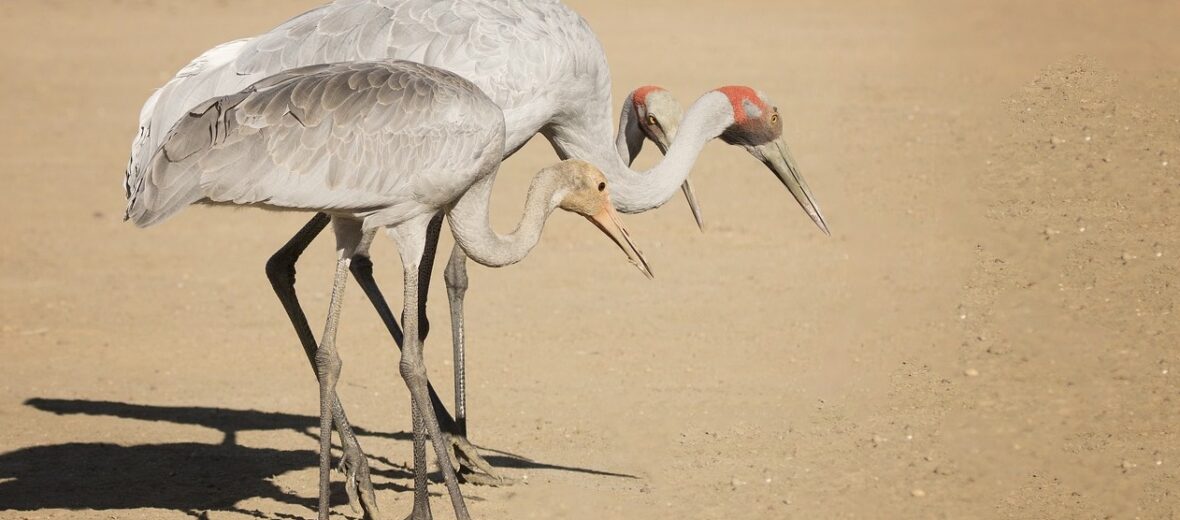
The brolga is a common wetland bird species of tropical and South-Eastern Australia, and New Guinea. Within New South Wales, brolga numbers have been reduced because of widespread drainage of suitable habitat for agriculture, land reclamation, and water regulation, but these birds are still common and widespread throughout Australia’s north. The IUCN lists the brolga as being of Least Concern.
First the Stats…
Scientific name: Grus rubicunda
Weight: Up to 14 lbs.
Height: Up to 4 feet
Wingspan: Up to 8 feet
Lifespan: Up to 33 years
Now on to the Facts!
1.) They participate in an elaborate courtship display, which involves lots of leaping, dancing, wing-flapping, throwing grass in the air, and loud trumpeting.
2.) Brolgas are omnivorous (eat both plant and animal matter), but mainly eat tubers and some crops. They will also eat molluscs, insects, amphibians, and mice.
3.) A brolga will typically lay 2 eggs. The eggs take approximately 32 days to hatch.
4.) They are the only crane endemic to the Australian region and tend to migrate between breeding and non-breeding sites.
5.) Their social unit is a pair or small family group of about 3 or 4 birds, usually parents together with juvenile offspring.
But wait, there’s more on the brolga!
6.) In the non-breeding season, they gather in large flocks, which seem to be just numerous self-contained individual groups rather than a single social unit.
7.) When taking off from the ground the flight is ungainly, with a lot of flapping of their wings. The bird’s black wingtips are visible while it is in the air and once it gains aerial speed, its flight is much more graceful and it often flies at great heights.
Did you know…?
When faced with a predator, the chicks will hide while 1 or both of the parents will perform an act known as a broken wing display. This is where they pretend to be hurt in order to lure the predator away.
8.) Brolgas are monogamous (mate for life). However, they will find a replacement partner if one of them dies.
9.) A group of these birds is called a flight, a flock, or a pod.
10.) The brolga is monogamous (mates for life).
Now a Short Brolga Video!
Also, check out the Critter Science YouTube channel. Videos added frequently!
Want to suggest a critter for me to write about? Let me know here.



